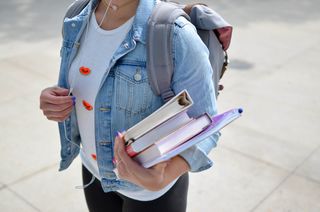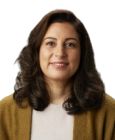Relationships
Lessons on Human Connection from Denmark
How school fundamentals in Denmark set the scene for a culture of togetherness.
Posted June 22, 2019 Reviewed by Devon Frye
by Dr. Kelly-Ann Allen and John Mason
In his major work, The Origins of Political Order, Francis Fukuyama’s poses what he sees as the central question of political evolution: Why did all countries not develop into Denmark? The Danish model of the welfare society and social and political equity is generally regarded as being the source of the high levels of happiness and prosperity that the country enjoys. As Fukuyama concludes, "getting to Denmark is a very long-term goal," but there is no doubt that its educational system plays a major part and that there are lessons to be learned from it.

What Makes Denmark So Special?
First of all, Denmark has very high levels of bonding social capital. That is, it is a society with tight social bonds and communal traditions and rituals built around human connection. The people of Denmark take great pride in what they call fællesskab–not easily translated into English, but best described as a sense of togetherness. Such strong social bonds are threaded into the country’s history and there are qualities inherent in the Danish educational system that may provide inspiration for schools around the world.
The first surprise is that there is a dual school system with government (municipal) run schools working alongside what are called "free schools"—not to be confused with Swedish or English versions. Both are funded by central government, but the free schools have considerable freedom of operation. They were established within the Danish constitution in the mid-19th century and their aims are significantly different from schools as we know them. They are linked to the democratic process in that their central purpose is for all people, irrespective of their socio-economic status, to access an authentic education concerned with life, the world, and the people around them. This provides students with a unique slant on the education they receive from school. Interestingly, despite the fact that there is no difference in their socio-economic background, this approach seems to produce better academic outcomes too.
Lessons from Denmark
So what can schools in Denmark tell us about human connection? Here are 8 common educational practices linked to empowering relationships and a sense of belonging that can be observed in Danish free schools.
1. Freedom to teach what they wish
Free schools are not obliged to follow any central government curricula, but what they teach has to "measure up" to what children learn in government schools. Nor are they obliged to enter children for examinations. Principals (Head Teachers) can also appoint staff as they wish, with the majority of free school teachers coming through the special teaching academy for free schools.
Free schools from the very beginning in the 1850s have emphasized that learning starts with the child. There is a strong focus on authentic and engaging teaching and in particular on what they call "the living word." That is, teaching life lessons through storytelling, song, and communication from the heart.
In addition, free school teachers focus on "hands-on" learning and learning by doing. Children are very often out in the woods exploring the world around them and using experience as a basis for more abstract learning. Due to this approach, an intuitive and natural emphasis on social and emotional skills is apparent. This provides a foundation for connecting with others through the lifespan.
2. Time for relationship building
The freedom and flexibility offered by the absence of a government-imposed curriculum allows more time for teachers to genuinely get to know their students. The primary function of school (and, indeed, of pre-school) is to give children social skills and develop emotional intelligence. In other words, to develop their sense of togetherness.
This is not to say that academic subjects are neglected, but children learn that they all belong—and the teacher is part of the process of belonging as well. The school becomes an extension of their family—but like any relationship, time and effort is needed. Teachers in many schools claim they no longer have the time to forge the very important relationships they need with their students, but this is not the experience of many teachers in free schools in Denmark.
3. Social equality, inclusion and trust
There is relatively little difference socio-economically between children in Denmark, and they are brought up to accept difference. The idea of school uniform is seen as absurd in Denmark—as is any form of compulsion. Attitudes toward "discipline" are relaxed, and for foreign observers could be viewed as either deeply refreshing or—if we are to be honest—slightly disquieting.
However, even in respect to disciplinary practices, a sense of togetherness is clear. If a child does something wrong, it would usually be regarded as a problem for everyone. A German girl who had misbehaved at a Danish free school was called in with her parents to see the principal. They dreaded the girl being expelled or punished in some way. Instead, the principal asked, "What have we done wrong, that you felt you needed to behave like this?" High levels of trust lead to high levels of self-confidence, which is very apparent when you encounter children from the free schools.
4. Singing together
It is well established in the literature that singing together has a profound effect on social bonding. In Denmark, school assembly is a morning routine, very much part of the school day representing a time to come together with each other and sing. However, this is not compulsory or forced. It is clear that the children are there because they want to be, singing because they enjoy it and that they and their teachers share the experience at the same level. As one song has it,
"You’re a part of a ‘we.’
To make love or make war will take more than just me.
Every day finds you choosing—
Between trust or refusing,
with a fist tightly closed, or a hand opened free—
Is it ‘me’? Is it ‘we’?"
["Hvor du sætter din fod" by Jens Sejer Andersen (trans. John Mason)]
5. Openness to parental involvement
The importance of parental support for a sense of school belonging has been found to be important through empirical work in the area. Parental support for schools involves parents showing interest and involvement in their child’s education, supporting them both academically and emotionally, and expressing high academic expectations for their child.
But at a time when parents are endeavoring to encourage independence for their children, how can parents be involved in school life in meaningful and authentic ways? In free schools, parents often have a unique relationship with the school. Many have collaboratively founded the school. They are on the school board, fundraise, act as substitute teachers, go on school trips and are free to join in on any school day to take part in classes—provided, of course, they are part of the "togetherness." Parental involvement is built into the school's very existence. Just as the school is an extension of the home, so home naturally forms an integral part of the school.
6. Smaller schools that are embedded in the local community
Another unique feature of free schools is that they can be founded when a need is perceived by the community. Increasingly, free schools are formed when the local government school closes or is merged into a larger unit. Parents can set up a free school with 14 pupils in the first year. Parents who have lost the fight to retain their local school will typically create their own free school.
The embeddedness in the local community and in local democracy has always been central to these schools. Parents want local schools that preserve the local fællesskab and can start a school if they perceive a need. It would be rare to see parents travel great distances to send their child to schools—school, therefore, becomes central to the local community. One benefit is that people have more opportunities to know their neighbours and the people in their community—and for the children playing outside, school becomes an extension of the community as well. The same children that play together at school can see each other on weekends or after school.
7. A gap year of a different kind
Efterskoler are special boarding schools for teenagers that are unique to Denmark, although South Korea has adopted and adapted them; they could loosely be likened to Timbertop at Geelong Grammar School, although crucially, these schools are distinct because they are funded largely by the state.
Young people aged 14-17 can spend a year—sometimes two—at a residential school specializing in their particular interest: art, sport, outdoor activities, for example. This allows students to build upon their individual strengths and interests through their schooling. There are around 250 efterskoler and about one in four Danish children spends a year there.
They are away from parents and familiar friends, have to learn to fend for themselves and work together to create a mini-world that functions together. They have responsibilities, such as cleaning and cooking, in addition to their school subjects. They can spend time with professionals on their special interests in the company of other like-minded pupils, and have opportunities to form relationships for life. They travel extensively, building and living in igloos in the far north of Norway, for example, or playing alongside musicians in Cuba. A special feature of these schools is the very close relationships students establish with their teachers, many of whom live with them at the school.
It is worth noting here that the third tier of the Danish free schools is their Folk High Schools, which are open to adults from 18 upwards. These are also state-funded and allow people at any stage in their life to immerse themselves for periods of 3 weeks to 6 months in a special interest—pottery, music, philosophy or whatever. They are also residential and their core element is also togetherness. This makes for truly lifelong learning.
8. Multi-age collaborations
Older students and younger students in free school settings are encouraged to work together and play throughout the day. While this opportunity arises in Australian schools also, in Denmark we see this practice embedded in daily school life, much like we see in schools in rural settings in Australia with low student populations and where multi-age classrooms are a necessity. The benefits of younger students working with older students are numerous with respect to fostering relationships. Younger students receive valuable mentoring, role modeling, and peer support. Older students learn about empathy and tolerance, and report greater academic self-efficacy.
Broad multi-age collaborations are possible because students attend the same school from around 6 to 16 in Denmark, so compared to Australian schools, they are at one school much longer. We know that there are multiple benefits associated with keeping students in one school longer. For example, increased belonging and academic achievement and decreased bullying. This may be explained by fewer transitional periods, which we know can deplete a sense of school belonging and feelings of connectedness with peers.

Concluding Comments
As a society, we are facing mounting global concerns over issues of social disconnection, isolation, and loneliness. Further research into what creates meaningful human connection and bonds requires our urgent attention. It is critical that a large portion of this work occurs early in life. A proactive and preventative approach is needed to buffer the negative effects and protect our young people from negative physical and psychological sequelae.
Maybe it is time to relax our attention on achievement, competences, skills acquisition, competition and stop pressuring our children into unhappiness. Maybe we could take a lesson from Denmark and accept that what comes first is the wellbeing of the child and his/her relationship with the world and with life as lived.
_______________________________________

About the co-author, John Mason
John Mason has a long career as teacher, academic, and writer. Having been a head of school in the UK, he moved to Denmark in 1994, where he has taught students of all ages, most recently lecturing at the University of Southern Denmark and at the Independent Academy for Free School Teaching, where he specialised in preparing teachers. He has been responsible for international activities for free schools in Denmark, including their international Togetherness conferences, and has written about togetherness and belonging. He is very active as translator of literary works, being nominated for the Impac Prize in 2008, and has edited countless academic articles and books. He was chosen for the Oxford Poets anthology in 2004, and is a member of the Society of Authors in UK and Denmark.




